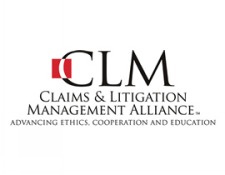Texting While Driving Accidents Lawyers – Connecticut
Attorneys for Victims of Connecticut Distracted Driving
The number of accidents due to distracted driving has exploded in recent years. Under certain circumstances such distracted driving may provide a basis not only for ordinary compensatory damages, but may also provide an evidentiary and legal basis for punitive damages (meaning attorneys fees and costs). As in any car accident case, claims can be asserted based on a negligence theory. Depending on the case, a claim for recklessness justifying a claim for punitive damages may also be asserted.
Jackson O’Keefe, LLP, knows the intricacies of the law and practice in car accident litigation. You don’t care about those details, but they can be very important in putting your case in the best possible posture for a favorable resolution. One of the mainstays of Jackson O’Keefe, LLP, over the last 50 years has been helping insurers defend against some of their most tragic and horrendous car accident cases. Now, we bring that knowledge and experience to you, to help your family obtain the full compensation it may be entitled to. Get the benefit of our many years of car accident experience by calling us now at 860.278.4040. Responsive. Caring. Fighting for you.
Connecticut Distracted Driving Laws
Texting or talking on your cell phone while in your car will result in higher fines under laws that went into effect in 2013.
Under the provisions of Connecticut General Statutes § 14-296aa(a)(9): “Operating a motor vehicle” means “operating a motor vehicle on any highway, as defined in section 14–1, as amended by this act, including being temporarily stationary due to traffic, road conditions or a traffic control sign or signal, but not including being parked on the side or shoulder of any highway where such vehicle is safely able to remain stationary.”
Under the statute, “(h) Any person who violates this section shall be fined one hundred fifty dollars for a first violation, three hundred dollars for a second violation and five hundred dollars for a third or subsequent violation.”
Additionally, “(k) A record of any violation of this section shall appear on the driving history record or motor vehicle record, as defined in section 14–10, of any person who commits such violation, and the record of such violation shall be available to any motor vehicle insurer in accordance with the provisions of section 14–10.”
If you or a loved one has been involved in an accident caused by a driver engaging in one of these or any other negligent acts, our auto accidents lawyers can help you win financial compensation. Call us at (860) 873 2994 any time or use the form above to contact us (we will respond immediately).
Distracted Driving, Cell Phones and Texting in Connecticut Motor Vehicle Accidents
In 2012, police in Connecticut issued 29,435 tickets for violations of the state’s prohibition against using handheld electronic devices while driving, according to statistic compiled by the Judicial Branch. In 2011, 3,331 people nationwide were killed in crashes involving a distracted driver, compared to 3,267 in 2010, according to the National Highway Traffic Safety Administration.
Almost 6,000 people died in 2008 in crashes involving distracted drivers, according to the National Highway Traffic Safety Administration. That is approximately 16% of all road deaths, up from 12% in 2007. Of fatal accidents connected to distracted driving during 2008, nearly 40% of the distracted drivers were under age 30, the biggest users of high-tech devices that take a motorist’s eyes and mind off the road. A Pew Research Center study indicated that 47 percent of adult drivers text or read text messages while driving. A similar study in 2009 found that 34 percent of 16- and 17-year-olds text or read text messages while driving. Consider this claim from the National Highway Traffic Safety Administration: Using a cell phone while driving, whether hand-held or hands free, delays a driver’s reaction as much as having a blood-alcohol level of 0.08 percent.
The Connecticut car accident lawyers at Jackson O’Keefe have the years of experience and knowledge necessary to provide you with the skilled representation you need when dealing with insurance companies following any type of motor vehicle accident. Car crashes and those involving motorcycles or commercial trucks all have specific laws and issues unique to them. Quick assessment of those issues, determining the cause of the crash and assessing the severity of your injury and your medical needs are the services you can expect when you retain our Wethersfield Connecticut car accident attorneys. The Connecticut car accident lawyers at Jackson O’Keefe are adept at assessing the physical principles of the accident, the medical evidence used to evaluate injuries, and the economic and accounting principles required to evaluate losses. We provide the strongest possible representation to maximize your recovery. We will investigate the car accident scene, research the accident and your car, along with any other evidence that came into play at the time of your accident. We will stand up for you against any wrongdoer, trucking company or anyone else who has caused you harm. It is our responsibility to make sure your rights are upheld and defended. Because of our experience in taking cases to trial, we can often obtain favorable settlements even without a trial. With over 50 years of representing Connecticut car accident litigants, the law firm of Jackson O’Keefe understands how the unique circumstances of your collision require careful and compassionate representation. We are also familiar with the very recent legal changes regarding distracted driving in this emerging, troubling area of injuries and death on the roads.
The culture of information “now” is creating an environment that could lead to an epidemic of Connecticut texting and distracted driving accidents as teens carry these habits into the car. A survey released in August 2010 found nine in 10 teenage drivers engaged in distracted-driving behaviors such as texting or talking on a cell phone, despite most of them knowing their actions increase the risk of crashing. Another study in September 2010 found despite plenty of research demonstrating that texting while driving can be just as dangerous as drinking and driving, most teens do not think that is the case. According to news reports, cell phones are “yet another thing that’s distracting people,” but a “flood of new distractions are being built into vehicles,” says Flaura Winston, scientific director at the Center for Injury Research and Prevention at The Children’s Hospital of Philadelphia.
According to news reports, at least eight state legislatures will consider laws this session to ban texting and driving. Eight states will also take up bans on using handheld cell phones while driving. Prodded by the federal government, 29 states passed no-texting laws since 2008.
Statistics — Connecticut Texting, Cell Phone and Distracted Driving Accident Lawyers
According to a November 2010 survey from the Insurance Research Council (IRC), almost one-in-five drivers in the United States (18 percent) reported texting while driving in the last 30 days. Younger drivers were much more likely than older drivers to say that they were texting while driving. Forty-one percent of drivers age 25 to 39, compared to only 5 percent of drivers 55 and older, reported texting while driving. Thirty-one percent of drivers age 16 to 24 said they had texted while driving in the last 30 days. The report, Public Attitude Monitor 2010: Texting While Driving, is based on an online survey of more than 1,400 licensed drivers conducted on behalf of the IRC by Harris Interactive, a market research firm. The survey was conducted between August 20 and September 7, 2010. “These findings confirm that a large number of drivers are engaging in very dangerous behavior,” said Elizabeth Sprinkel, Senior Vice President of the IRC. “The need to find an effective response to this behavior is becoming increasingly clear.” For more distracted driving statistics see our Connecticut Distracted Driving Statistics page.
Summary of Connecticut’s Distracted Driving Statute
The Connecticut statute as a whole prohibits the operation of a vehicle while using a hand-held mobile telephone to engage in a call; while using a mobile electronic device; or while typing, sending or reading a text message with a hand-held mobile telephone or mobile electronic device. It will be presumed that you are making a call if you have the cell phone near your ear. Young drivers and commercial drivers face stiffer penalties and greater restrictions. An update will be posted once the full implementation of the new laws are completed.
Federal Efforts to Coordinate a Reduction in Distracted Driving
Federal Transportation Secretary Ray LaHood has recently stated on his blog: “You have to have good laws, you have to have good enforcement, and you have to have people take personal responsibility. That’s the bottom line.” “When you get behind the wheel of a 5,000 pound automobile, you have a personal responsibility to drive that vehicle safely. That means, put away cell phones and other devices that take your focus off of the road.”
Federal and state governments have taken a variety of steps to reduce the number of people who drive while talking or texting, increasingly blamed for traffic accidents. In June the Senate Commerce Committee approved a bipartisan bill that would reward states for banning drivers from talking on cell phones or sending and receiving text messages. In August the Transportation Department kicked off pilot programs in Hartford, Connecticut and Syracuse, New York to test whether increased law enforcement efforts can get distracted drivers to put down their cell phones and focus on the road. The pilot programs, which are similar to previous efforts to curb drunken driving and increase seat belt use among drivers, were the first federally funded efforts in the country to specifically focus on the effects of increased enforcement and public advertising on reducing distracted driving. Drivers caught texting or talking on a hand-held cell phone will be pulled over and ticketed.
Federal Rules Against Commercial Distracted Driving
In Transportation Secretary Ray LaHood’s campaign against distracted driving, his agency proposed on December 18, 2010 prohibiting commercial truck and bus drivers from using cell phones behind the wheel. The rule would effect approximately 4 million drivers, who are already banned by the federal government from texting while driving.
“Every time a commercial truck or bus driver takes his or her eyes off the road to use a cell phone, even for a few seconds, the driver places everyone around them at risk,” LaHood said in a statement.Inattention was a factor in 9% of crashes involving large trucks, and between 6% and 13% of those involving busses. There were 38 fatal bus crashes in 2009, up from 20 previously. Large transport outfits such as UPS and Wal-Mart already prohibit drivers from using cell phones while driving, and many state and local governments have bans in place. The proposal must go through a 60-day comment period before being finalized. Nearly 5,500 people died and half a million were injured in crashes involving a distracted driver in 2009.
“Faces of Distracted Driving” is a series of videos exploring the tragic consequences of texting and cell phone use while driving established by the Department of Transportation. They feature people from across the country who have been injured or lost loved ones in distracted driving crashes. In 2009, nearly 5,500 people died and half a million were injured in accidents involving a distracted driver. The videos can be seen here. The video series is part of Secretary LaHood’s effort to raise public awareness about the dangers of distracted driving and to support victims. In January, Secretary LaHood joined anti-distracted driving advocate Jennifer Smith when she announced the creation of FocusDriven, the first national nonprofit organization dedicated to ending distracted driving. The U.S. Department of Transportation is also encouraging others who would like to share their distracted driving experiences to post videos on YouTube and the links.
The Federal Railroad Administration (FRA) issued a rule prohibiting rail employees from using cell phones or other electronic devices on the job following a September 2008 Metrolink crash in Chatsworth, California that killed 25 people. After a Northwest flight crew distracted by a laptop overshot their destination by 150 miles, the Federal Aviation Administration (FAA) advised air carriers to create and enforce policies that limit distractions in the cockpit and keep pilots focused on transporting passengers safely. The Federal Motor Carrier Safety Administration (FMCSA) announced a ban on text messaging while operating a commercial motor vehicle in January 2010. A rulemaking proposed by the Pipeline and Hazardous Materials Safety Administration (PHMSA) in September 2010 to work in conjunction with the FMCSA ban would restrict the use of electronic devices by drivers during the operation of a motor vehicle containing hazardous materials.
Research Study Quantifies Impact of Distracted Driving
Researchers from Texas A&M’s Transportation Institute have quantified how distracting cell phone use can be, and the results are shocking. TTI tested reaction times for focused drivers and then for those using cell phones by monitoring how long drivers took to react to a flashing light (which could symbolize an actual yellow or red light as well as a pedestrian unexpectedly crossing the street).
Normal reaction times were “a second or two,” but doubled when a cell phone was put in the driver’s hand. Texting drivers were eleven times more likely to miss the flashing warning lights all together.
The test was performed in a controlled setting, on flat ground with on a straight course. Variables that challenge even focused drivers were all but negated. As the researchers put it in the 43-page report “it is frightening to think of how much more poorly our participants may have performed if the driving conditions were more consistent with everyday, routine driving.”
Forty-two drivers, from 16- to 54-years old, were placed behind the wheel of a car and drove around a closed track of just about 11 miles in length. The researchers monitored how long it took drivers to react to a flashing light while driving normally and while attempting to text and read a message on a mobile phone.
The researchers say the average, normal reaction times were about a second or two. But put a cell phone in the driver’s hand and reaction times jump to three or four seconds. What’s more, texting drivers in TTI’s small study were 11 times more likely to miss the flashing warning lights completely. Researchers also note the distracted drivers had much more difficulty staying in the straight driving lane as well as maintaining consistent speeds.
CT Distracted Driving Law Update: Research study reveals an 11% increase in deaths of 16 and 17 year old drivers in 2011
A report released on February 16, 2012 by the Governors Highway Safety Association (GHSA) reveals that the number of 16- and 17-year-old driver deaths in passenger vehicles increased slightly for the first six months of 2011, based on preliminary data supplied by all 50 states and the District of Columbia. Overall, 16- and 17-year-old driver deaths increased from 190 to 211 – an 11 percent increase. If the trend continued for the second half of 2011, it will mark the end of eight straight years of cumulative declines in deaths for this age group. The new report – the first state-by-state look at teen fatalities in 2011 – was completed by Dr. Allan Williams, a researcher who formerly served as chief scientist at the Insurance Institute for Highway Safety. Dr. Williams surveyed GHSA members, who reported fatality numbers for every state and D.C. The report comes as the National Highway Traffic Safety Administration (NHTSA) has released a statistical projection suggesting that total motor vehicle deaths for the first six months of 2011 declined 0.9 percent.
Deaths of 16-year-old drivers increased from 80 to 93 (16 percent) while the number for 17-year-olds went from 110 to 118 (7 percent), a cumulative increase of 11 percent. Twenty-three states reported increases, 19 had decreases, and eight states and the District of Columbia reported no change. While the changes in state-by-state fatality numbers generally are small, states such as Florida, Texas and North Carolina reported significant increases. Dr. Williams attributes much of the increase to the fact that the benefit of state Graduated Driver Licensing (GDL) laws may be leveling off, as most of these laws have been in place for some time. Additionally, Dr. Williams speculates that improving economic conditions are contributing to an increase in teen driving, thus increasing their exposure to risk. Dr. Williams notes, “While it is not a surprise that these numbers are stabilizing or slightly increasing, states should not accept these deaths as something that cannot be prevented. More work can and should be done to save teen lives.”
Troy E. Costales, Chairman of GHSA, said, “While it is good news that overall deaths appear to have declined during the first six months of 2011, we are concerned that the trend with teens is going in the opposite direction,” He continued, “As the report notes, a widespread strengthening of laws is still possible and finding effective tools outside of GDL is an important goal. These include improving driver education and involving parents in proactively establishing safe driving habits for their teens.” Chairman Costales added, “As the parent of a young driver and a soon-to-be-driver, I know firsthand the pressures parents face in allowing their teens behind the wheel. As parents, we must set and enforce strict rules for our new drivers, making sure risks are minimized. This includes limiting other teens in the car, limiting nighttime driving and absolutely prohibiting any type of cell phone or electronic device use while driving.”
Barbara Harsha, Executive Director of GHSA, said states could use federal support to save more teen lives. “As part of the upcoming highway reauthorization bill, Congress should provide financial incentives to states that have strengthened or will strengthen teen driving laws. Additionally, Congress should provide adequate funding so that NHTSA can research and support demonstration projects to determine the most effective ways to increase teen seat belt use and compliance with GDL laws. Congress also should fund NHTSA and the states to carry out distracted driving campaigns aimed at teen drivers,” Harsha added, “Research also needs to be done to determine the impact of changing school start times so that teens are less likely to be driving fatigued.”
The full report, including state-by-state data, is available online at www.ghsa.org. The Governors Highway Safety Association (GHSA) is a nonprofit association representing the highway safety offices of states, territories, the District of Columbia and Puerto Rico. GHSA provides leadership and representation for the states and territories to improve traffic safety, influence national policy, enhance program management and promote best practices. Its members are appointed by their Governors to administer federal and state highway safety funds and implement state highway safety plans.
Jackson O’Keefe, LLP fights for Connecticut motor vehicle accident victims and Connecticut distracted driving, cell phone and texting car accident victims throughout the State of Connecticut, including clients in Farmington, Wethersfield, Rocky Hill, Moodus, East Haddam, Hadlyme, Southington and Plantsville.






